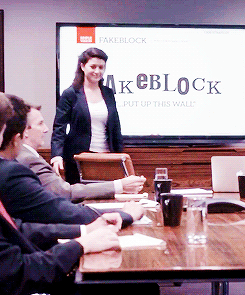by Nina Post
Our minds can be like malfunctioning iPods. Sometimes you leave the repeat function on, and the mean stuff you say to yourself loops over and over again. Or you’re on a playlist that contains a bunch of short files: one that reminds you of something annoying someone said to you, and one that reminds you to worry about what people think of you, and one that won't stop playing that song you heard in a grocery store.
If that were an iPod, you would say, wow, these songs are terrible — why am I listening to this shit? You’d get rid of the files and replace them with something that makes you feel better, makes you feel strong and confident, makes you learn something.
But it’s not an iPod. This metaphor may come as a shock, but it’s your mind I’m talking about.

What can you do? The good news is, you can make a point to counter those thoughts with positive, useful ones—and even use a strategy to help direct your thoughts and plan how you want to feel.
It’s well-worth it: self-talk is a useful self-regulation strategy for managing cognitive processes and emotions, increasing performance, and facilitating learning.
One of the functions of self-talk is criticizing yourself. Those files suck; replace them with other files you’ve listened to many, many times, like “Everybody (Backstreet’s Back)” and “Lovefool”.
Another function of self-talk is self-reinforcement, or talking to yourself about positive daily events. (Yes, that’s possible.)
And another very important function of self-talk is self-management, which is when you regulate and direct your daily behavior with a strategy or instructions for what to do or say.
So here are tips for creating a strategy to manage and prepare your self-talk:
- Make a list of actions you believe would be the most influential in helping you attain the feeling you want.
It could be learning and doing research, working efficiently, doing focused and uninterrupted work, listening to calming music, going for a run, or monitoring your inner dialogue and your beliefs in your abilities.
Identify a few times when you felt negative emotions and were engaging in a lot of critical self-talk, but overcame those obstacles to accomplish something important or meaningful.
This could be a work project, a presentation that went great, a challenging hobby, a big move. Give it a short and pithy name and use it a touchstone for when you need it most.
For that last tip, it could be a situation where you felt a lot of doubt about your ability to pull off a huge project, and were simultaneously trying to get it done while balancing work responsibilities. You had no feedback along the way, no idea where to even start, and a ton to learn—but you took it one step at a time and made progress. And now you know you can tackle a similar or even bigger project. Use that as a trigger with a descriptive keyword when faced with a similar challenge in the future.

Creating awareness of your self-talk, having a strategy for responding to obstacles, and applying tactics in the moment is a skill you learn how to apply over time, so just keep working on it!
Sources:
gifs by giphy
The Development and Initial Evaluation of Two Promising Mental Preparatory Methods in a Sample of Female Cross Country Runners
Journal of Sport Behavior.
A view from the inside: an in-depth look at a female university student's experience with a feel-based intervention to enhance self-confidence and self-talk
The Qualitative Report.






